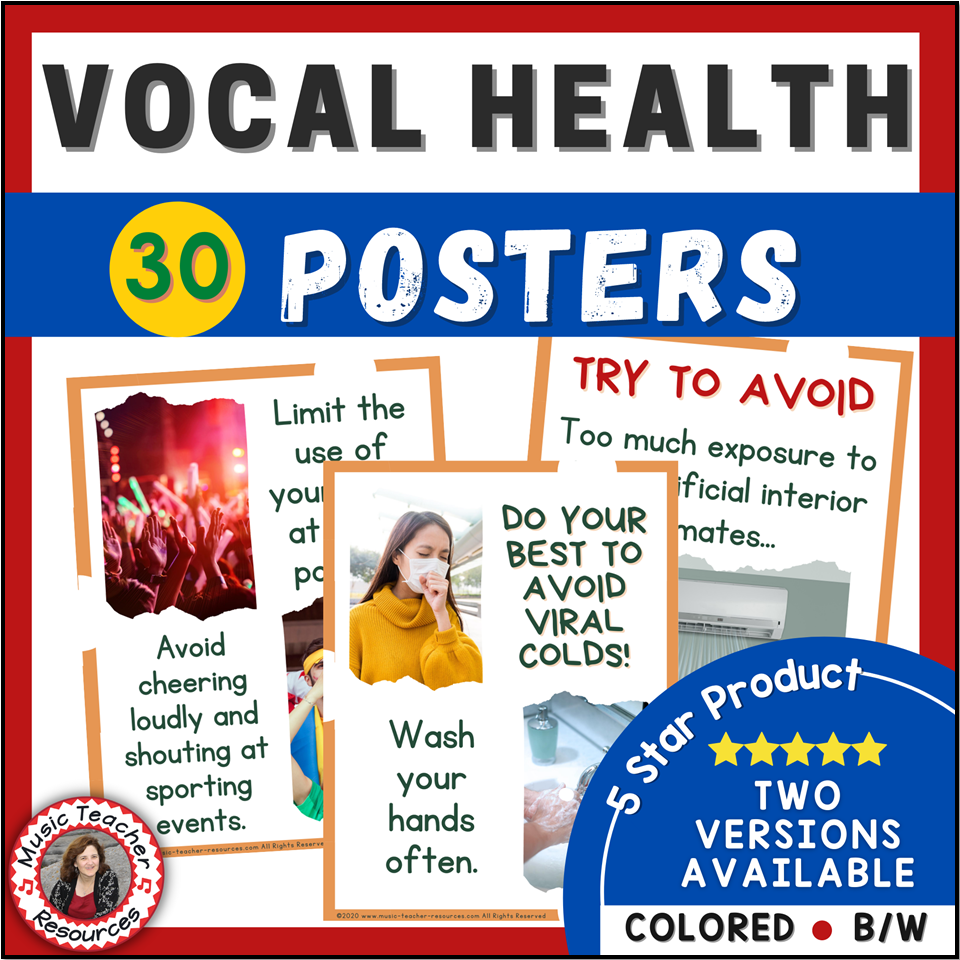Voice Care for Teachers

FIVE Tips For Looking After Your Voice
There's no denying that teachers' vocal strain and voice problems are occupational hazards.
Research shows that teachers are three to five times more likely to experience voice problems than the general population, with 20% of teachers being acutely affected each year. It's not hard to see why. Educators need to speak for a length of time in large, noisy classrooms.
Furthermore, Michigan State University and the University of Utah study revealed that female teachers have a significantly higher risk of hurting their voice due to their smaller larynxes or "voice boxes". Females' vocal cords also vibrate more quickly. Because of this, female teachers are more likely to develop long-term vocal problems.
Teaching with no voice is like driving with eyes closed. How can teachers prevent vocal strain or damage to their voices? What solutions did other teachers take after straining their voice? Read on to see FIVE helpful tips.
1. Take A Vocal Rest
Vocal rest is often the primary solution for recovering an injured voice. Resting the voice means total rest - no speaking, no whispering either. If your voice is hoarse, rest it over the weekend. In some instances, 4-5 days of rest may be required.
Keep in mind that vocal folds resonate sympathetically with other sounds. Try to avoid being around noisy areas to help them fully rest. Moreover, it's essential to take a vocal rest even after the damage has healed. Don't force the voice when not at work. Seek medical attention if vocal rest doesn't work; scheduling an ENT (ear, nose, throat) appointment is a crucial step to make. ENT doctors are experts in treating vocal damage.
2. Hydration
The very nature of our job requires a lot of speaking and singing. These activities are dehydrating as every exhaled breath carries moisture out of the body.
Working in a heated/air-conditioned room causes dryness in your throat.
Keeping the voice hydrated is another critical factor in maintaining vocal health. Drink lots of water but avoid drinking it cold or with ice. Some suggest that drinking warm herbal tea is also good to soothe a strained voice.
Keep your intake of caffeinated drinks to a minimum. I have vocal health posters like the one below displayed in my teaching studio and classroom. They keep the importance of vocal health in the minds of my students.
VOCAL TIP POSTER
These beautiful posters, each containing a vocal health tip, are a valuable resource for all teachers! CLICK HERE.
3. Invest In A Mic/Amplifier
Using a portable microphone and a mini amplifier might make the voice sound slightly different. However, this set of equipment will save the voice in the long run. Doing otherwise will continue to strain the voice.
4. Steaming
Inhaling steam at the start and end of the day is an easy way to maintain vocal health. It helps relax and loosen the vocal cords.
Inhaling steam is the only hydration method where water droplets directly contact the vocal folds.
You can steam your voice using the old-fashioned methods: steaming over a bowl of hot water or taking a hot shower.
Purchasing a personal steamer is another option.
Steaming for 10 minutes, at least twice a day, is recommended.
5. Warm-up Before Teaching
Not warming up before doing any exercise may lead to a vocal injury. Try lip trills, and vocal massage on the face, under the chin, larynx, and shoulders as a quick warm-up.
Some teachers integrate warm-ups and stretching exercises into their music class as this gives them the chance to do it frequently and helps students maintain their vocal health.
VOCAL HEALTH POSTERS
These beautiful posters, each containing a vocal health tip, are a valuable resource for all teachers! CLICK HERE.
Looking for more time-saving, engaging resources?
Check out MTR’s collection of music teaching materials - SHOP the MTR Store or our store on TpT.
Would you like more music teaching strategies? Check out these related posts to keep your lessons fresh and interactive!
Blog Post: Teaching Rhythm in Music
Blog Post: 5 Call-and-Response ActivitiesTo Keep Your Music Class Engaged
Blog Post: Benefits of Body Percussion Activities
Blog Post: Energize Your Music Classroom With a Fun Rhythm Reading Game
Blog Post: Teaching Music Notation: Fun and Effective Strategies
Blog Post: Giant Staff Jumping Game: Easy Adaptations for Every Grade Level
Blog Post: Benefits of Color-by-Music Activities
Blog Post: 11 Proven Strategies to Keep Students Engaged During Music Rehearsals
Blog Post: Planning a Successful Lesson
MTR 12-Month Memberships
Save time and inspire your students with a growing collection of music-teaching resources!
Subscribe to one of the MTR 12-Month Memberships for Music Teachers today.
Click HERE for more information!
Sign up to receive the monthly MTR newsletter and gain exclusive access to the
FREE Resource Library for music teachers!









